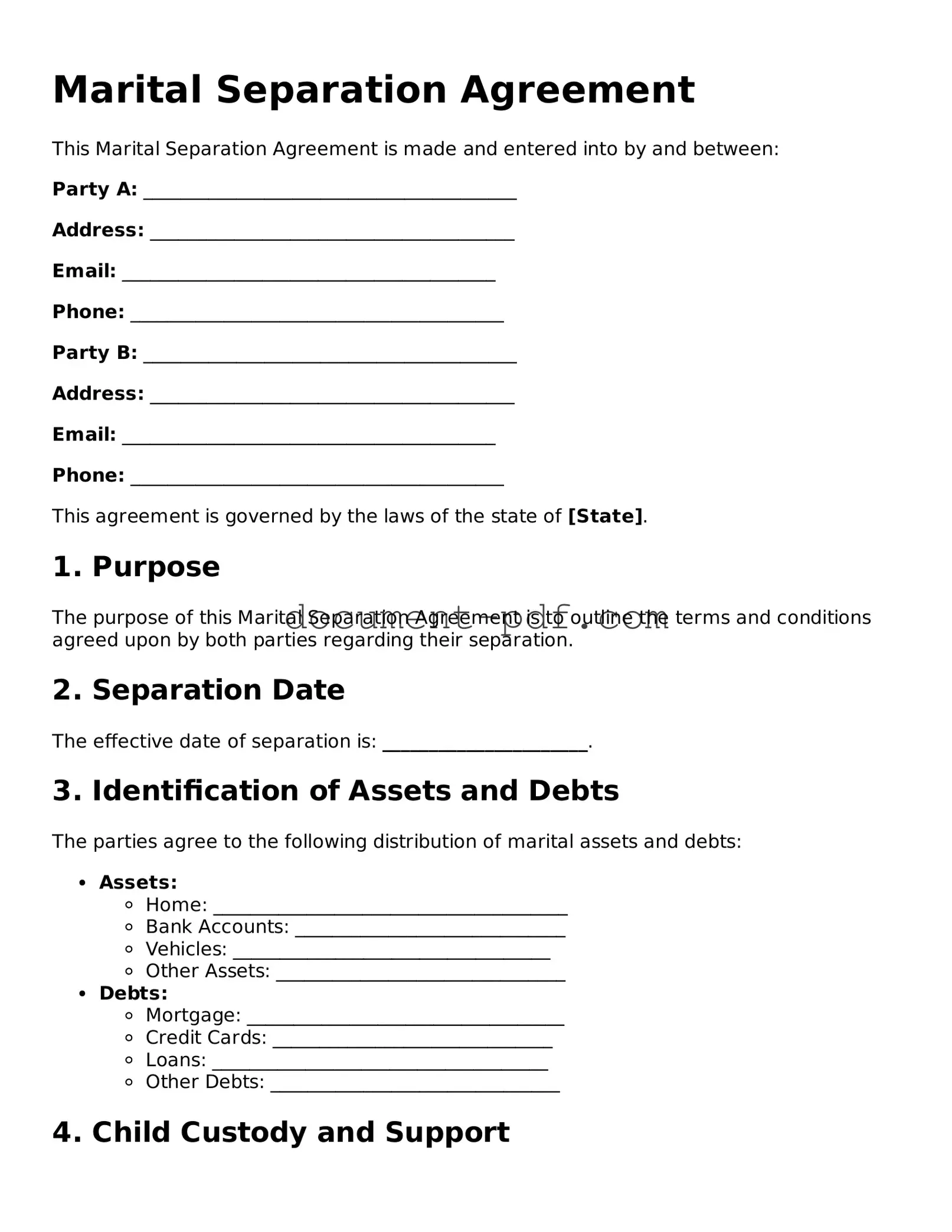Marital Separation Agreement
This Marital Separation Agreement is made and entered into by and between:
Party A: ________________________________________
Address: _______________________________________
Email: ________________________________________
Phone: ________________________________________
Party B: ________________________________________
Address: _______________________________________
Email: ________________________________________
Phone: ________________________________________
This agreement is governed by the laws of the state of [State].
1. Purpose
The purpose of this Marital Separation Agreement is to outline the terms and conditions agreed upon by both parties regarding their separation.
2. Separation Date
The effective date of separation is: ______________________.
3. Identification of Assets and Debts
The parties agree to the following distribution of marital assets and debts:
- Assets:
- Home: ______________________________________
- Bank Accounts: _____________________________
- Vehicles: __________________________________
- Other Assets: _______________________________
- Debts:
- Mortgage: __________________________________
- Credit Cards: ______________________________
- Loans: ____________________________________
- Other Debts: _______________________________
4. Child Custody and Support
If applicable, the parties agree to the following regarding child custody and support:
- Custody Arrangement: ______________________
- Child Support Amount: ____________________
- Payment Schedule: ________________________
5. Living Arrangements
The parties agree to the following living arrangements during the separation:
- Party A shall reside at: ___________________________
- Party B shall reside at: ___________________________
6. Miscellaneous Provisions
The parties agree to the following additional provisions:
- Future modifications of this agreement must be made in writing.
- Both parties will engage in good faith negotiations regarding future disputes.
- Each party shall retain a copy of this agreement.
7. Signatures
By signing below, both parties agree to and accept the terms of this Marital Separation Agreement.
Party A Signature: __________________________________ Date: ________________
Party B Signature: __________________________________ Date: ________________
This agreement is executed on the date listed below.
Date of Agreement: ________________
